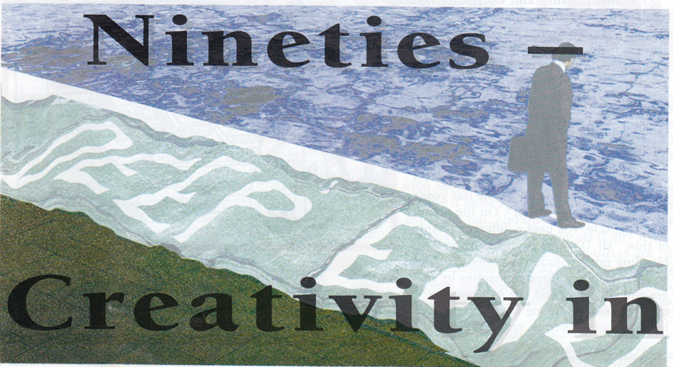
Businesses today, whether they are based in New York or New Delhi, are battered by the 3C phenomena-Customers, Competition, and Change.
Customer expectations are changing so rapidly that companies like 3M, Silicon Graphics, and Hewlett Packard eat their own winning products for lunch. These corporations kill their winners by bringing in new products so fast that the competition is left gasping. Recall the recent ad for HP’s 560C Deskjet printer? This printer boasts of features like greater ease of use, RET (an acronym for resolution enhancement technology). higher intelligence for optimizing print settings for each page, etc. What do you think HP’s game plan is? HP wants its customers to replace their one or two-year-old printers with this new box. HP doesn’t want to give its customers time to even look at the competitors offerings. HP also wants to create new needs and meet customer expectations. That isn’t all. It wants to remain a step ahead of the competition. So what strategy does it adopt? It relentlessly pushes its own successful products out of the market. Which brings us to the next C-Competition.
Competition is intensifying with each passing day. There is some little upstart or the other who comes in with a smarter marketing plan, a better or more suitable product/service in order to Woo your long standing customer away. Remember Citibank s visa card with your snapshot? Anyone else offering in now is an also-ran.
Citicard has run away with the trophy until another card company upstages Citicard! Competitive forces have never been so destructive, or so powerful (and painful) in the history of business. As if these two forces were not enough, the changes taking place unendingly in every walk of life leaves no choice for companies but to start thinking and I mean real thinking, to retain market share and customer loyalty. Of course, all companies think. Otherwise, we wouldn’t be where we are today. Yet, thinking has been seen as an unconscious act. just like breathing and hearing and seeing. After all, didn’t we all go to school and college for this very purpose?
Yes, we did. Yet, the thinking taught by educational institutions Is one dimensional, analytical, and number-driven. This kind of thinking is of great help with strategies, structures, and systems the hard stuff of the McKinsey 7-8 model. But what about the remaining 4 S’s-skill, style, staff, and most crucially, superordinate goal? These four S’s (the soft S’s) require something quite different from analytical thinking.
The crazy times we live in need thinking that can feed the soft S’s. The triad of changing customer expectations, intensified competition, and constant change demand that corporations focus on the soft S’s as well. Why? Because they require new weapons-those of Creativity, Curiosity, and Candidness. Why else would Michael Ray and Rochelle Myers write a book based on the famous Stanford University course on creativity?

Listen to what they have to say in their introduction. One of the main problems in business today is that there are too many ideas, not too few. Dozens of solutions appear and disappear in chaotic piles of data, crowds of expert opinion. and a jumble of contradictory statistics and reports on every aspect of every issue. The pressure of limited time is increased by indecision and, beneath it all, the nagging suspicion that others will find your efforts insufficient and the results poor. The key to cutting through the chaos to reach the underlying answers lies in the creativity of the individual business person.
The media has also recognized this and joined the crusade for creativity. Business week, Fortune, Esquire, Fast Company, Newsweek have attacked business schools for being too analytical, too conservative unconcerned with people, shortsighted, and as a whole, shamefully uncreative.
When I talk about creativity to business is all about company chiefs, I hear the same refrain again and again-we are bottomline driven, we are systems- driven, we live by numbers… Well, why would companies like Rubber- maid, 3M, Sun Microsystems, and Silicon Graphies bring in new products at such a breathtaking pace if it weren’t for their business, health? You think they don’t care for the bottomline and systems? Isn’t it time we learnt something from these companies and emulated them? Has any CEO been bumped off for attempting to initiate innovative marketing and servicing techniques? But innovation is impossible if the only training people receive is technical and product-related. Something far deeper has to be done.
We all want to associate with companies that win, quality awards. Quality awards cannot come from strategy, structure, and systems alone. Business history has no examples of such a thing having ever happened. The super ordinate goal is the driving force that shapes the other six S’s-skill , style , strategies, streamlines and Systems. Training some people to use their inherent creativity ( which everyone possesses), in the day-to-day work environment is what creativity in business is all about. It doesn’t belong exclusively to the hallowed halls of company directors, nor is it middle management’s responsibility alone. Good ideas can emerge from anyone (including your customer…no, cross it out to read , particularly your customers) and they have the potency to do the same amount of good to the organization.
Corporations will have to wrestle with their consciences on the amount of money they spend on technical training, and set aside sums for building creative competencies. Soon, annual reports of companies will contain not just financial figures but several strange entries such as creativity index, intellectual indicator, fun factor, and customer satisfaction quotient.
Are CEOs willing to develop methods to rate their companies against these new measures? Isn’t it time to get your corporate can openers out to liberate individual creativity hidden in the folds of your organisations?



